Street Food in Cuba: Eight things we ate for less than 25 cents (15 pence)
To me, the mention of “street food” conjures up images of Thailand: home of the most delicious snacks and quick bites that can be bought from a roadside stall or mobile cart anywhere in the world. But street food in Cuba? For us, although it didn’t end up ranking amongst the best, it’s what we ate for lunch most days.
Although occasionally we saw carts selling snacks, invariably street food in Cuba means a hole-in-the-wall place. Either a small cubby-hole of a café sandwiched between other buildings, or a window into the kitchen or living room of a private house. It’s quite common to see a small blackboard hanging on a wall, with a few items chalked up. And, when you look closer into the window the board’s hanging next to, you’ll see half of the family sat on rocking chairs watching TV and the rest in the kitchen, making pizza.
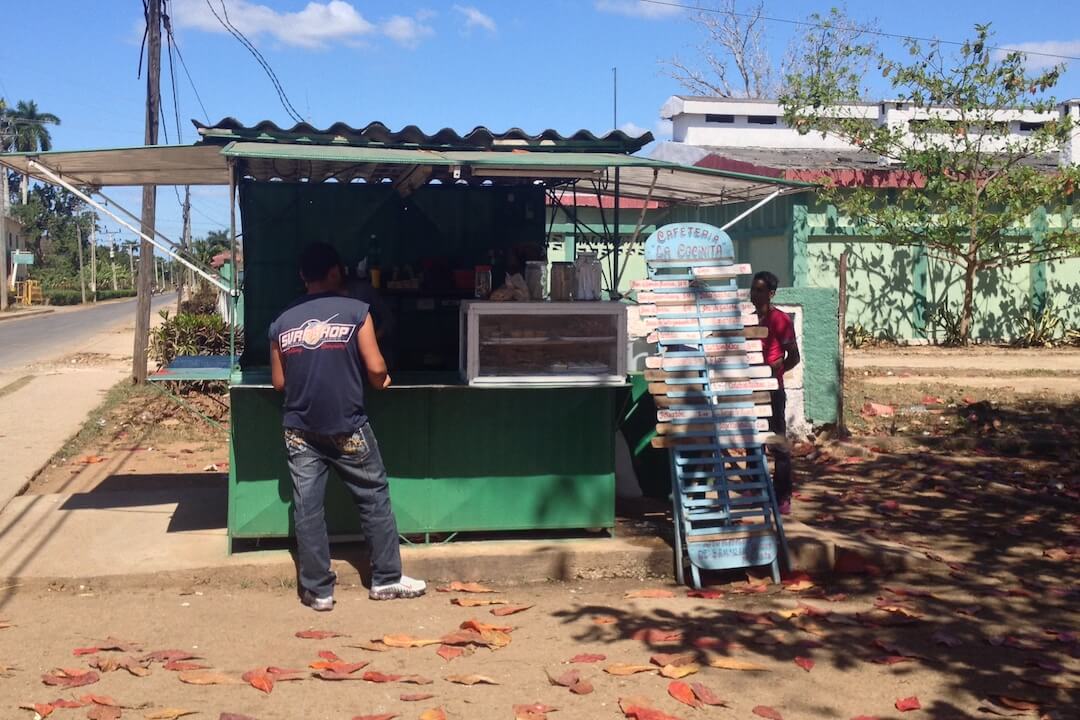 Street Food in Cuba from a side-of-the-road shack
Street Food in Cuba from a side-of-the-road shack
Cuban street food is definitely not as healthy as its Asian counterpart but it’s readily available, fills a gap, and, only costs a few pennies.
So, here are eight things we ate in Cuba for less than 25 US cents / 15 pence / 16 Euro cents
All costs in are in local Cuban pesos, sometimes called “national money”, which is worth approximately the following in other currencies:
1 peso = 4 US cents / less than 3 pence / 3 Euro cents
5 pesos = 22 US cents / 14 pence / 17 Euros cents
10 pesos = 44 US cents / 28 pence / 33 Euros cents
Pizza
Not the healthiest of meals but pizza became our regular lunch option and we convinced ourselves that nutritionally it wasn’t that much different to a sandwich.
The cheapest pizza we found was 5 pesos for a cheese and tomato topping but 8 pesos was the average cost. For between 10 and 12 pesos this could be upgraded to a ham or salami topping. Forget Italian thin-crust, Cuban pizza has a thick doughy base, a good smear of tomato sauce and, usually, a generous portion of melted mozzarella-style cheese. They’re not going to rank amongst the world’s best pizza, but secretly I quite liked them!
Glass of fizzy drink
Once-banned, Coca Cola is now available in Cuba (imported from Canada, not the US) but you’ll pay around 2 dollars for a can from a shop. But at a hole-in-the-wall spot, one or two pesos (that’s 4 pence or 7 US cents) will buy you a glass of generic fizzy pop. It’s known as a “refresco” and usually bought to accompany a pizza. It doesn’t contain many vitamins but it’s sweet and thirst-quenching.
Ice Cream
We love ice cream but often when we’re travelling it is designated a treat. Either because it’s costly relative to other food items or it’s never the healthy option and we feel guilty for eating it. But at 3 pence a pop it was hard to come up with any excuses not to indulge! And after a pizza and sugar-laden pop for lunch, what better way to top off the meal?
Prices varied up to 5 pesos for a generously-heaped cone or a large scoop served in a plastic cup. The cheapest we had was a real bargain at 1 peso for a Mr Whippy-style strawberry cone!
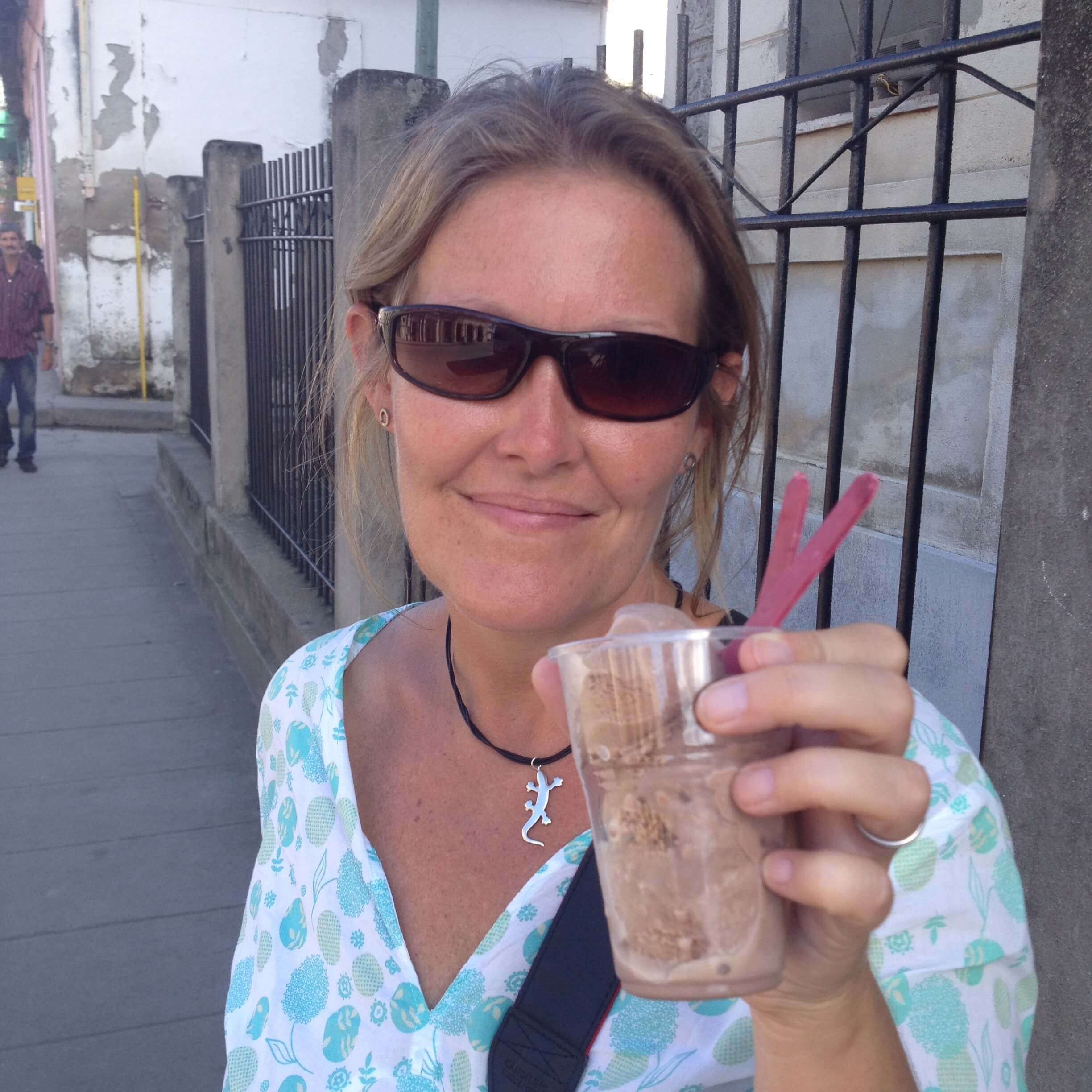
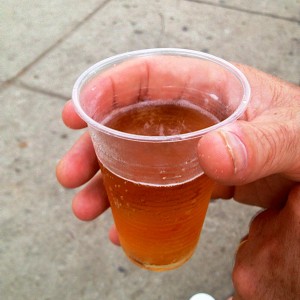
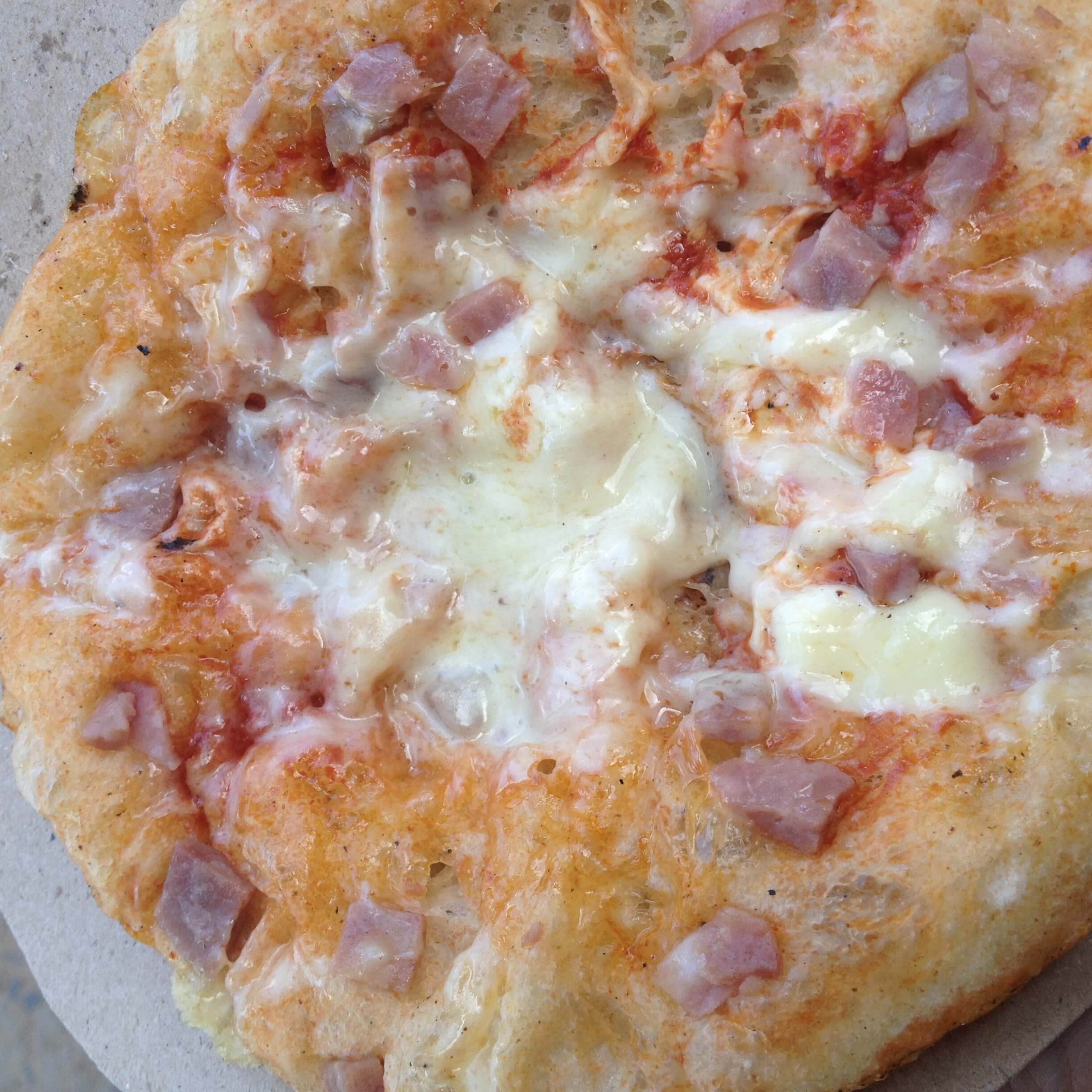
Ice cream, beer and pizza
Spaghetti
Feeling less like junk food, a bowl of spaghetti in tomato sauce and topped with grated cheese will set you back around 8 to 10 pesos. It was reminiscent of Heinz tinned spaghetti – not the best spaghetti you’ll ever eat, but certainly edible. Unfortunately, this wasn’t an option for cheese-hating Mark as the portions were already made up in cling-filmed covered bowls and stored in the fridge ready for microwaving on demand.
Ham and cheese roll
It does what it says on the tin! You can’t go wrong with a simple ham and cheese roll. Well, not often. The meat is not always the best quality and sometimes, the bread not at its freshest but usually a ham and/or cheese roll was a good option for 5 pesos. Sometimes a couple of slices of tomato provided a bit of extra nutritional value.
Hamburger or Hotdog
More junk food. Hamburgers and hotdogs are readily available from street carts and hole-in-the-walls (as well as from any of the many fast-food restaurants). Prices vary up to around 10 pesos but the cheapest hamburger we ate cost just 3 pesos. But I have to say, it was pretty disgusting and I did regret eating it!
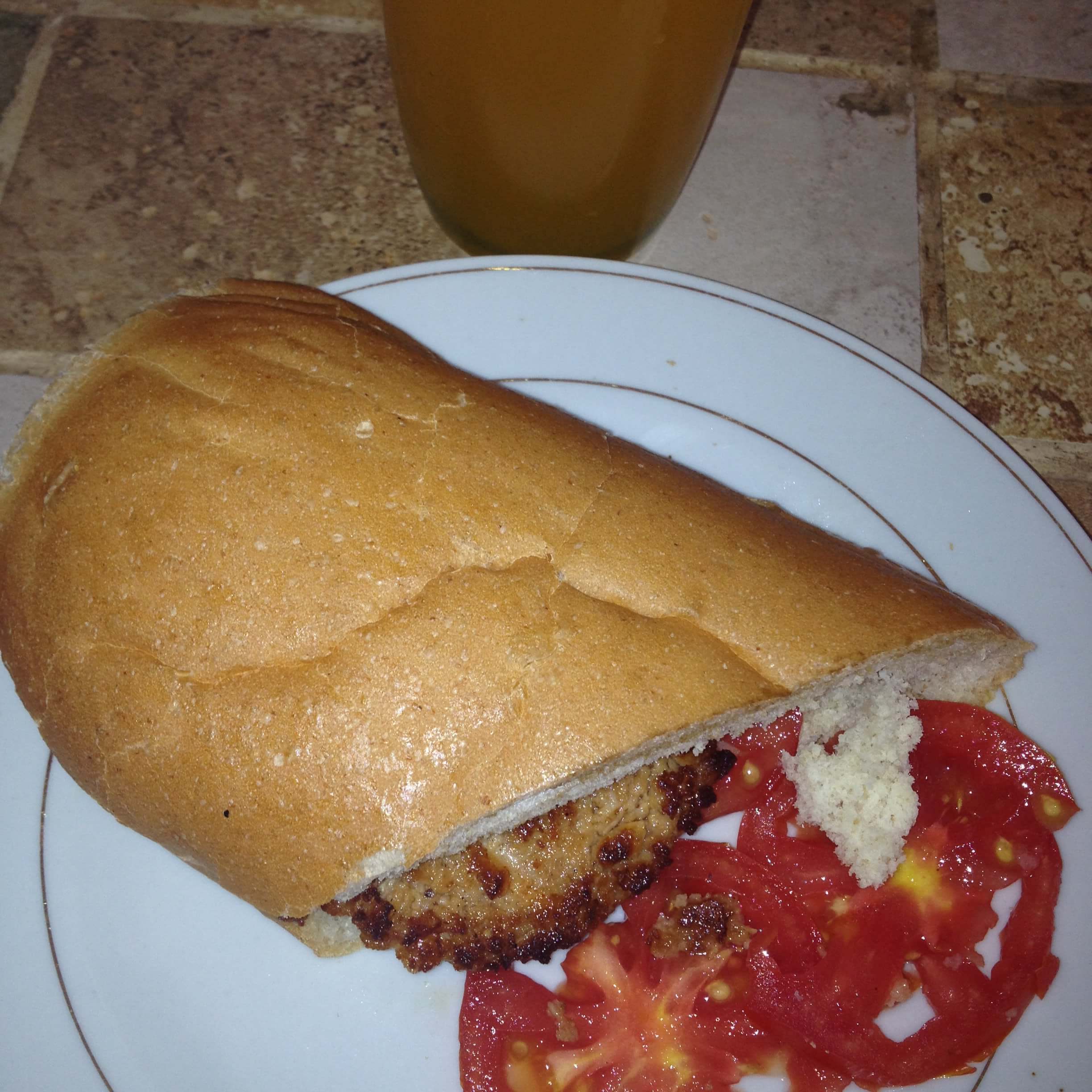
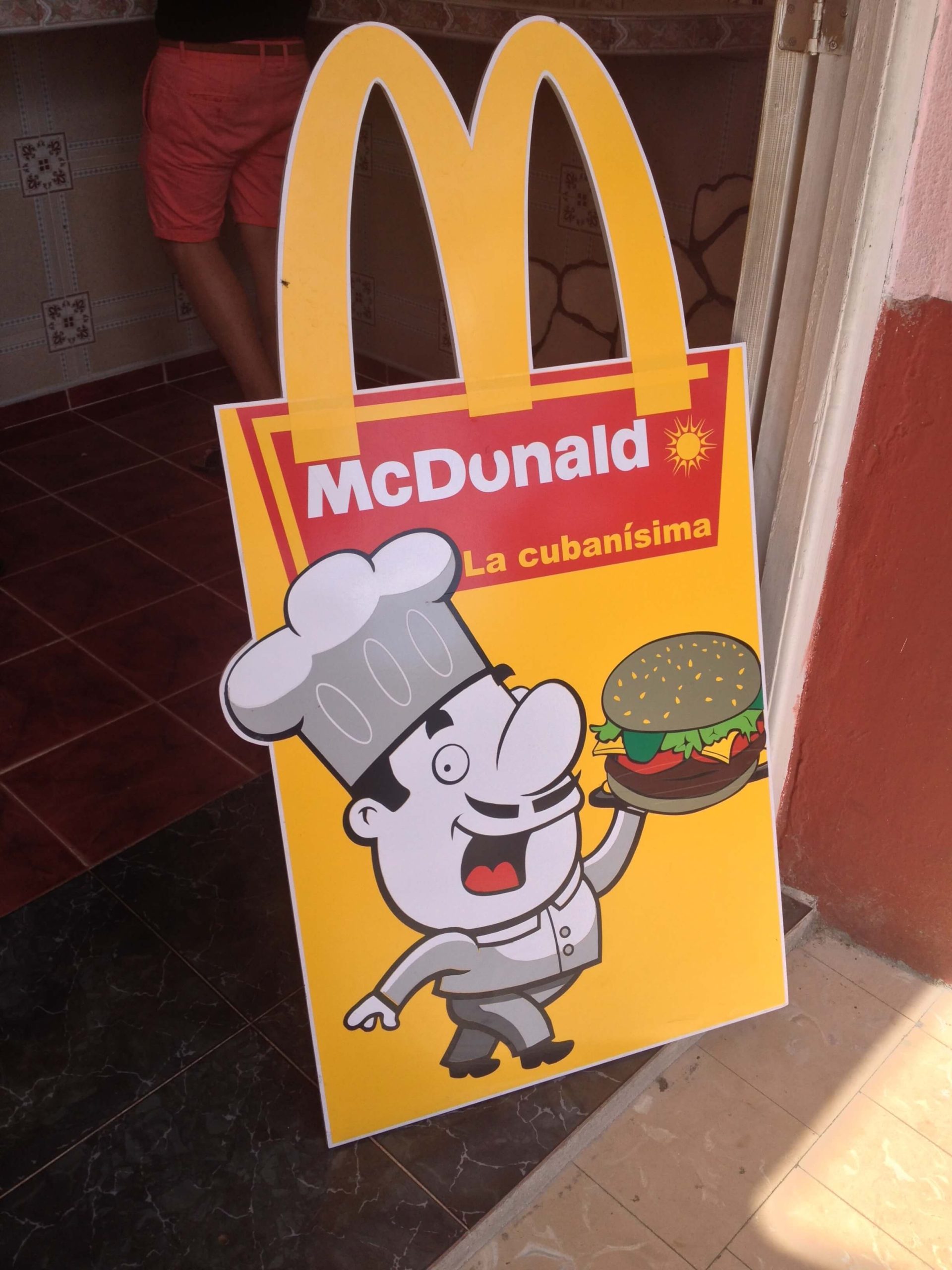
Hamburger Cuban-style
Glass of beer
OK, so not technically food and debatable even as a form of sustenance but I’m giving this liquid refreshment an entry here! Another hole-in-the-wall enterprise, we found places selling beer by the glass on the streets in several towns we visited. The cost of a small plastic cup of very crudely made homebrew? Just 5 pesos. It tasted pretty rough and I’ve no idea what the alcohol volume was but it was really, really strong. We had wondered why we’d seen so many completely wasted Cubans passed out on benches or pavements when things are financially tough for so many; but when alcohol is this cheap, the answer is obvious. By comparison, a can of professionally-brewed beer from a corner store costs around 1 CUC (equal to 1 US dollar). A dollar’s worth of street beer would render most people pretty legless. Maybe there are connoisseurs of craft beers out there who may appreciate it. But me? I preferred to stick to the mojitos.
Bunch of bananas
Kind of street food because it’s bought from a vendor roaming the street with a cart; if the junk food gets you down there is always the fresh fruit option. The types of fruit available and the price varies according to the season, but a bunch of bananas will set you back between 5 and 10 pesos. Other locally grown fruits you may come across include papaya, pineapple, oranges and melon.
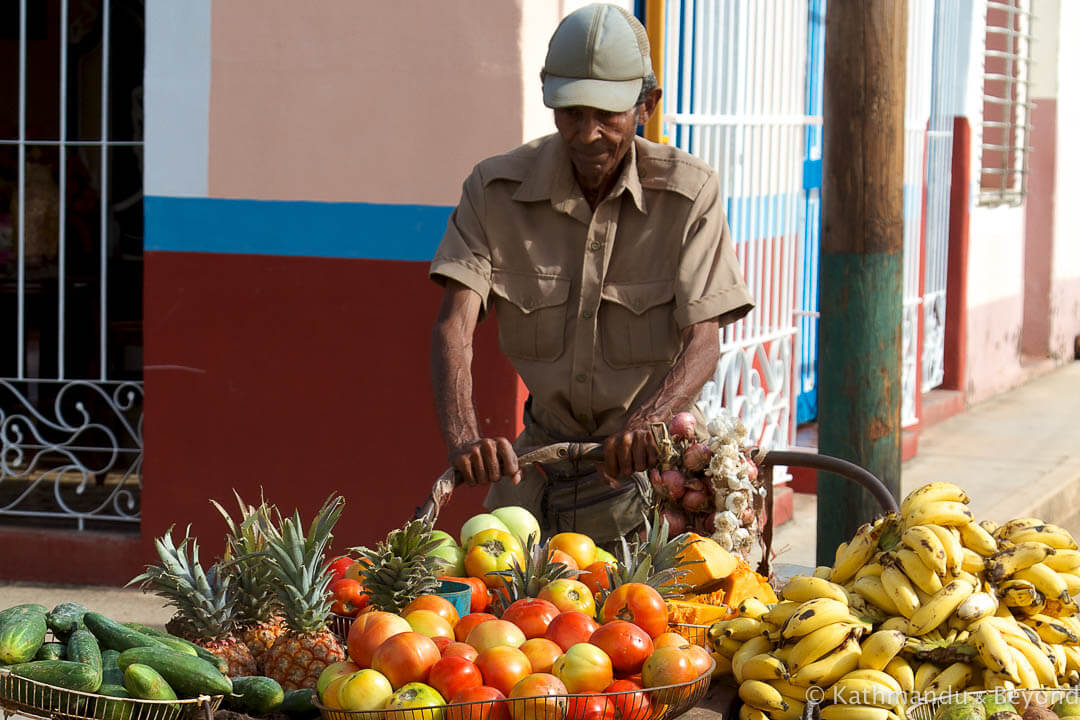 Fruit cart in Remedios
Fruit cart in Remedios
So, although we didn’t (usually!) resort to these street food options for breakfast or dinner (we reserved them for lunch and snacks), it is possible to spend only 2 or 3 dollars a day on food whilst in Cuba. And although this list is intended to be a light-hearted look at what you can buy for next to nothing it does highlight a couple of things. Primarily: just how little money the average Cuban must be living off, if (and assuming they do), these prices represent the real cost of eating and drinking in Cuba. And even though not directly comparable (sometimes in quantity and sometimes in quality), to the price of an average 8 dollar tourist meal, it shows how much the cost is out of proportion.
Secondly, if the nation is, as it appears to be, living off pizza and burger … Well, we all know that’s not good for you. But maybe a lot of people are eating cheap pizza because it’s the only thing they can afford. Once more, Cuba put forward more questions than we managed to answer!

I just visited my family in Cuba in March. Cuban make on average $20 a month. The cost of food is very expensive for locals. The government provides them with food rations that only last about 10 days out of every month. For the rest of the time, Cubans must buy food in markets where much higher prices are set by the laws of supply and demand. Many locals make food and sell it out of their homes to make extra money. I tried the local pizza and it wasn’t the greatest. They make do with the ingredients they can get.
It seems like a lot of Latin countries have really unhealthy street food. The same thing happened to me when I was in Uruguay. Granted, Uruguay has a high standard of living compared to the rest of L. America, but we found everything there really expensive! We resorted to eating the street food hamburgers and hotdogs because it was all we could afford. Let’s just say that got old really fast!